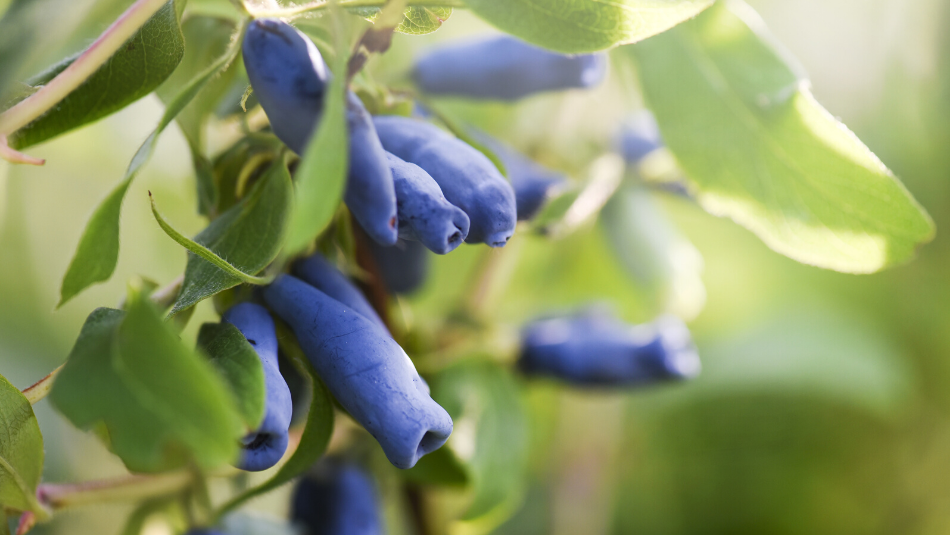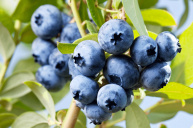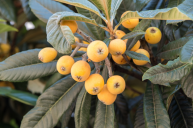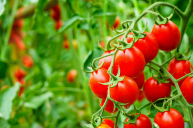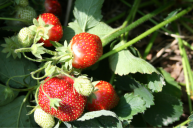We often use the word innovation to describe technological or mechanical inventions, but there is just as much innovation in agriculture as there is in computers and machines. From new types of apples and grapes to shelf-stable cheese, farmers and horticulturists are creating new foods. Or, in some cases, taking an older food and making it popular in new parts of the world. That's the case with the honeyberry, a fruit that isn't new, but is just now catching on in North America.
The honeyberry bush is native to Russia; it's a cold-hardy plant and farmers in Asia and Eastern Europe have been growing this fruit for hundreds of years. Honeyberry plants are members of the honeysuckle family (Lonicera caerulea). You might also see it called the haskap berry after the Japanese name for the plant, or here in the United States, it might be sold as Edible Blue Honeysuckle.
Because the plant does so well in cold weather, honeyberries are often the first fruit of the season to ripen. The dark blue, oblong small fruit starts to show up in early spring, and tend to be ready before strawberries.
What do honeyberries taste like? Some people call it a cross between a raspberry and a blueberry, others think it tastes more like kiwi or cherry. The fruit has a thin skin and can be eaten picked fresh, or baked into desserts and made into jams and preserves.
If you're going to try growing honeyberries at home, here are a few things to keep in mind.
The bushes are hardy and grow well without a lot of attention in the right climate. The shrubs will grow from 3 to 8 feet; because of their size, they work really well as part of an edible and decorative landscape.
The planets grow best planted 4 to 6 feet apart in moist, well-drained soil, but they will still produce fruit on wet, clay soils in a partly shaded location. Honeyberry plants have shallow root systems, so you'll want to lay down organic mulch. If you're in a southern location, the plants will need some protection from the sun, but in northern locations, full sun is fine.
You'll need at least two different varieties for cross pollination. Honey bees are great pollinators for the fruit trees, but watch out for birds, deer and rabbits. They like the blue honeyberries as much as we do, so you may have to put nets over the shrubs to keep the animals from getting all the best fruit.
You can grow the plant from dormant stem cuttings; you may see some fruiting the first year, but it may take a couple of years for full production. The growing season is two to three weeks long, and the bush will produce fruit for up to 30 years. Some varities will produce up to 10 pounds of berries every year after five years.
Look for the fruit to turn dark blue throughout; some honeyberry varieties may have a blue skin with green flesh, which makes for a deliciously tart berry.
In addition to being tasty, the berries are also good for you and contain a higher level of antioxidants than blueberries.
Honeyberry USA has some excellent recipes to use your honeyberry harvest, including jam, honeyberry pie, and honeyberry coffeecake.
https://rumble.com/embed/u7gve.cc49br/
